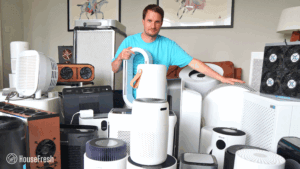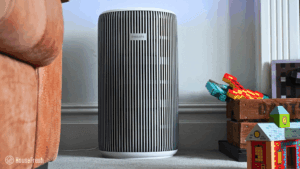The 4 Compact is the smallest air purifier we have tested from Xiaomi. It is currently available in the U.S., Europe, Asia and some countries in South America, selling for under $100.
It comes with app support through Xiaomi’s Mi app and has an in-built infrared laser particle sensor that feeds live data to the air purifier to enable a smart mode that automatically adjusts fan speeds based on the quality of your air. In terms of filtration technologies, the Compact 4 comes with a small 3-in-1 cylindrical filter including a pre-filter mesh cover for large particles, a low-grade particle filter for small particles and a layer of activated carbon for odors.
The overall score for the Xiaomi 4 Compact incorporates first-hand data results from our battery of tests, as well as our ratings for customer service, brand transparency and design & UX. Check out the full scorecard below to see the split of categories.
Search for the 4 Compact (or any other model you are researching) to see where it ranks:
The pros and cons of the Xiaomi 4 Compact
A summary of our top-level findings after testing this air purifier following our methodology.
“If $99 is the top of your budget, then the 4 Compact is definitely a good option for you.
At this price, the 4 Compact will give you okay performance at top speed but above average performance at sub-45 decibels, which I’d argue is more important in the day to day.
It also has some of the lowest running costs when compared to other popular small devices, so you won’t be spending an arm and a leg to use this air purifier each year.”

HouseFresh Founder
& Lead Tester
CONS
PROS
| Clean air delivery rate (CADR): | – Top speed PM1 CADR: 117 cfm – Sub-45 dBA PM1 CADR: 77 cfm – Manufacturer provided CADR: 135 cfm |
| Filter technology: | Bonded cylindrical particle filter with a layer of pelleted activated carbon and a pre-filter mesh cover. |
| Recommended room size: | 175 sq. ft. (5 air changes per hour) |
| Dimensions: | 8.6 x 14 inches (21.8 x 35.5 cm) |
| Weight: | 4.85 lb (2.2 kg) |
| Noise level in decibels from 3 ft. away: | Sleep mode: 35.6 dBA Speed 1: 35.3 dBA Speed 2: 35.6 dBA Speed 3: 42.2 dBA Speed 4: 44.5 dBA Speed 5: 46.4 dBA Top speed: 56.1 dBA |
| Electricity consumption in watts: | Standby: 1.4 watts Sleep mode: 2.2 watts Speed 1: 2.4 watts Speed 2: 3.6 watts Speed 3: 8.1 watts Speed 4: 9.5 watts Speed 5: 11.3 watts Top speed: 26 watts |
| Filter lifespan: | 6 months |
| Manufacturer’s warranty: | 1 year |
| Country of origin: | China |
| Country of manufacture: | China |
Filtration technology
The 4 Compact comes with a 3-in-1 cylindrical filter that can capture particles and help with mild odors.
The filter has three layers to it. First, you get an outer pre-filter mesh cover that wraps around the particle filter which has a layer of activated carbon on the inside.

However, it is worth mentioning that this is a small filter so it doesn’t come with enough activated carbon to help with serious issues with VOCs or strong smells.
On their website, Xiaomi explains that the filters in the 4 Compact have a lower grade of density than traditional HEPA-grade filters, which they say will lead to higher performance at a lower noise level.
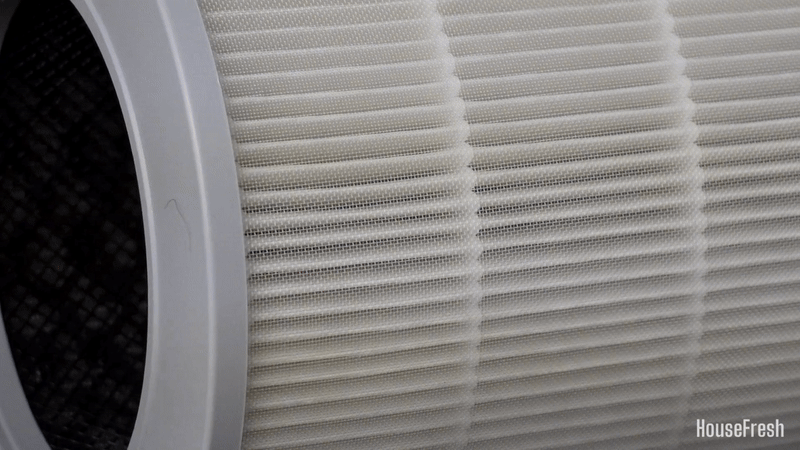
Xiaomi also states that in their testing, the filters could remove 99.9% of particles as small as 0.1 microns. It sounds impressive but is something that many particle filters can achieve, including MERV 13 filters.
Design, controls and features
A small cylindrical air purifier that doesn’t take up too much floor space, similar to what you get with the Airmega 100, Core 300S, Winix A231 and PuroAir 240.
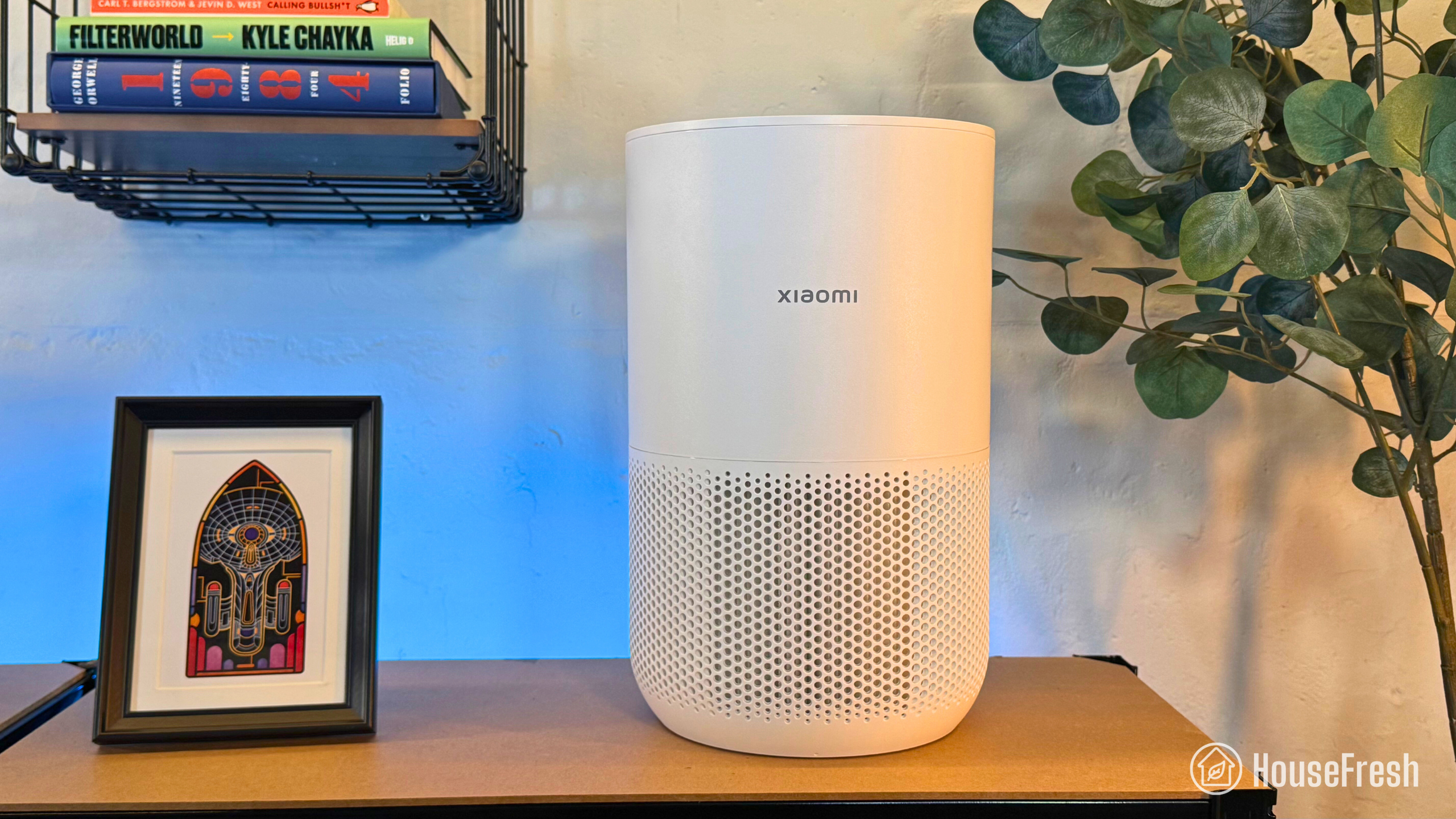
The 4 Compact (right) is a small cylindrical air purifier, similar in size with what you get with the Winix A231 (left) and the Coway Airmega 100 (center).
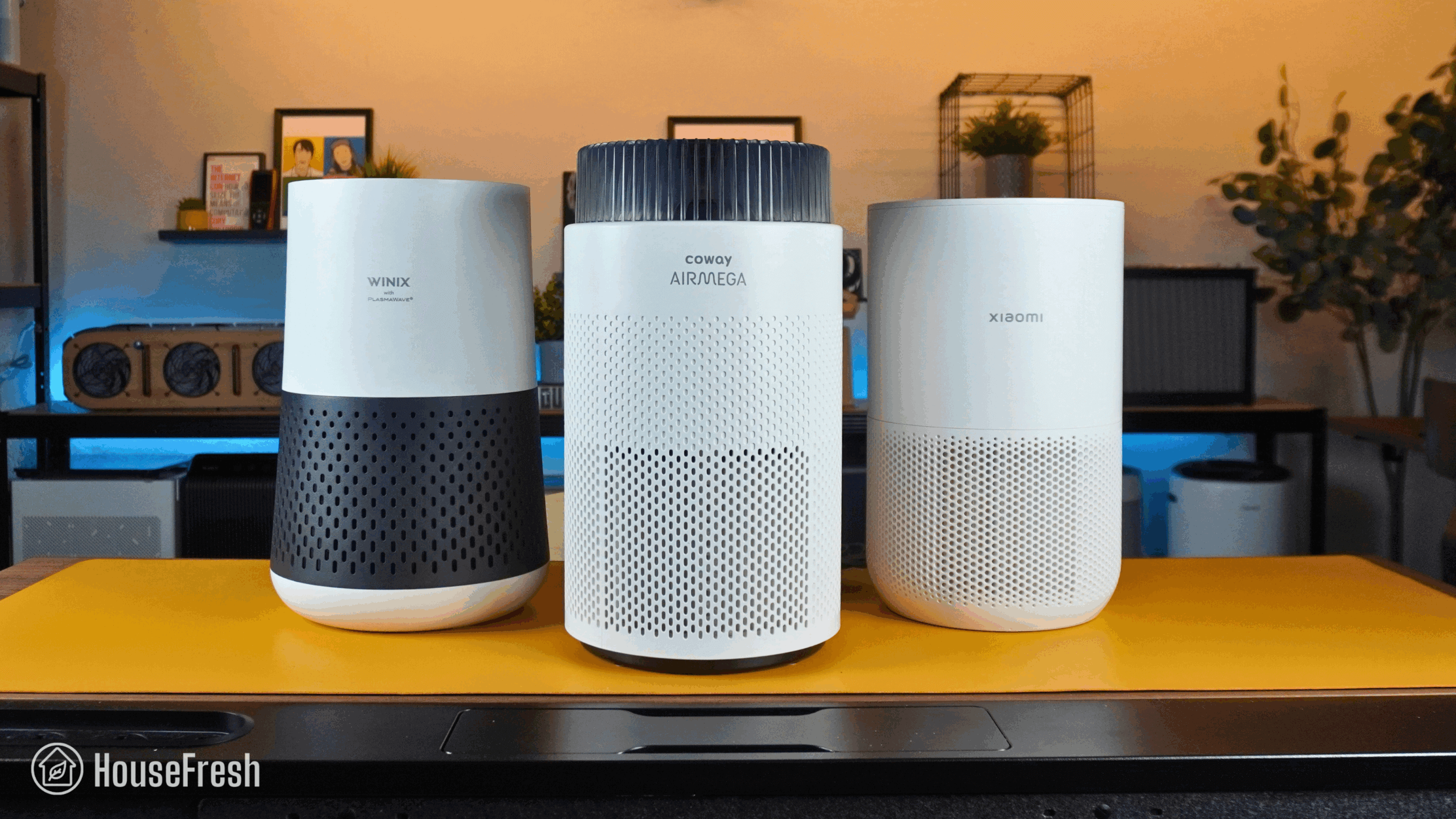
It is lightweight, doesn’t take up too much floor space and can easily fit on top of a desk or side table without looking too bulky.
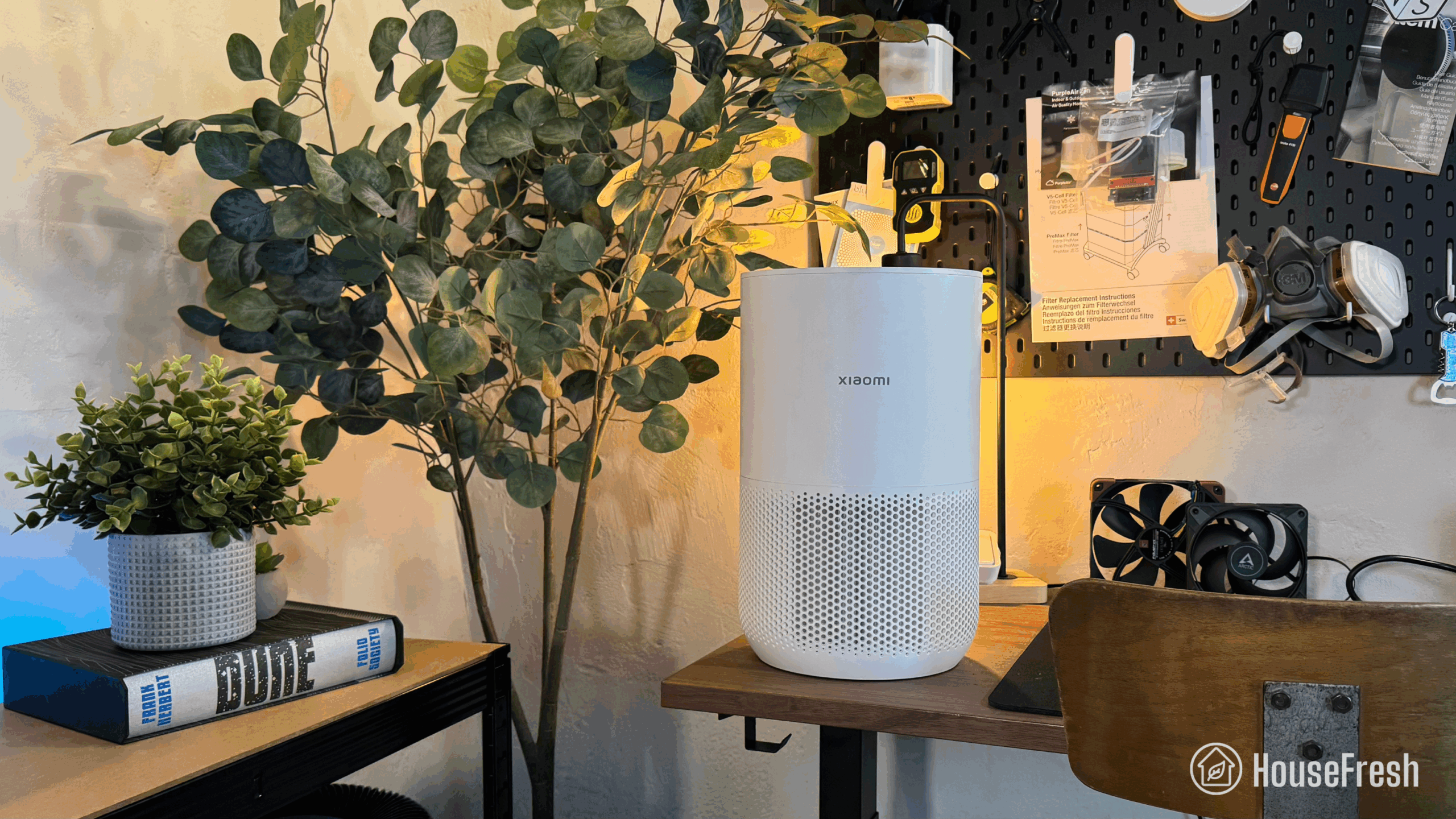
It comes with an infrared laser particle sensor, which is nice to have BUT is a cheaper sensor compared to what you get with the Xiaomi 4 Pro or the Xiaomi Elite, both of which have a laser sensor that also measures temperature and humidity.
Also, you need to remember to clean the sensor with a dry cotton swab to wipe the dust that will stick to it every few months to ensure the air quality readings are accurate.
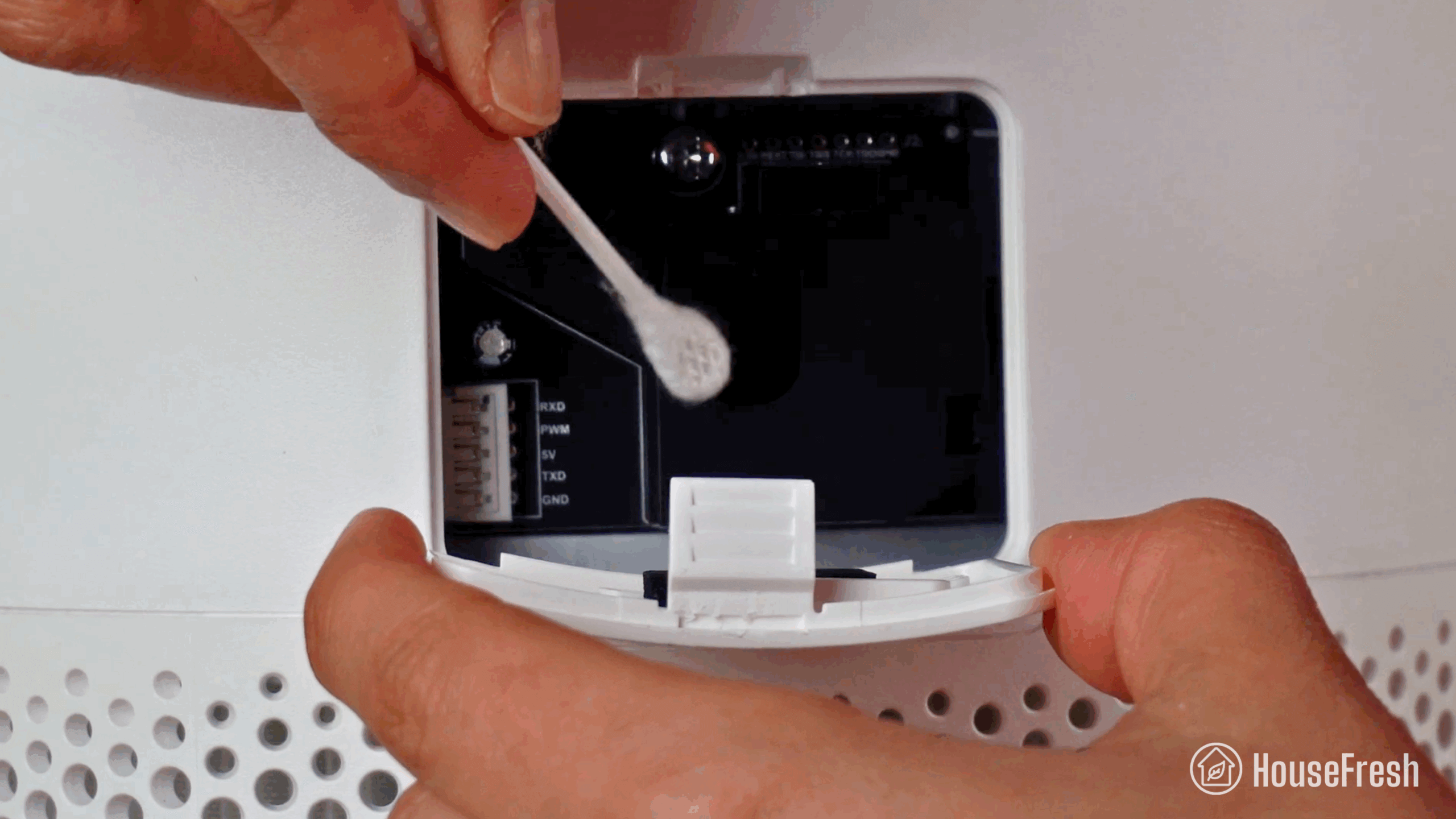
Like other Xiaomi air purifiers we have reviewed, the control panel consists of a touchscreen with three buttons that sits at the top of the device.

From left to right, you get a button to dim or turn off the lights, a power button and a mode button to switch between auto, manual and sleep mode.
By the way, you will need to access the app in order to set manual fan speeds. Once you set what the manual speed is, the 4 Compact will automatically switch to it after you choose Manual with the mode button.
The mode button also doubles as a child lock if you press and hold the for seven seconds.
You also get a bunch of indicators on the screen, such as a child lock indicator, a Wi-Fi indicator and a filter life indicator.
There is also an LED air quality indicator bar at the top that changes color from red to yellow to green, based on the levels of pollutants in the air.
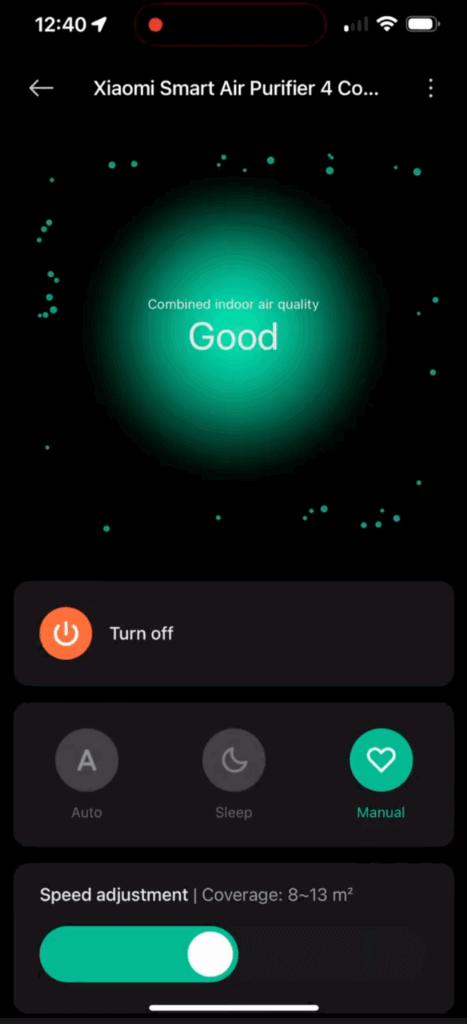
Through Xiaomi’s Mi Home app, you will be able to set the most optimal fan speed based on the size of your space and save your settings the Manual mode the device will go into when selecting M on the touchscreen.
You will also have the option to schedule routines, check the current filter lifespan and set automations with other Xiaomi devices.
Something disappointing is that, unlike the Xiaomi Pro 4 or the Elite, you don’t get an exact reading for PM2.5 levels in the air. Instead, the app shows a combined indoor air quality score.
Personally, I haven’t had any issues with the Mi app but I read some negative reviews on the App Store from people who had issues with their electric scooters and their vacuum cleaners.
It seems most issues are happening on iOS as the current rating for the app is 3.7 from Apple users compared to 4.5 from Android users.
Air cleaning performance
We tested the 4 Compact in our 728 cubic ft. test room, tracking how fast it removed all PM1 particles from the air after we filled the space with incense smoke.
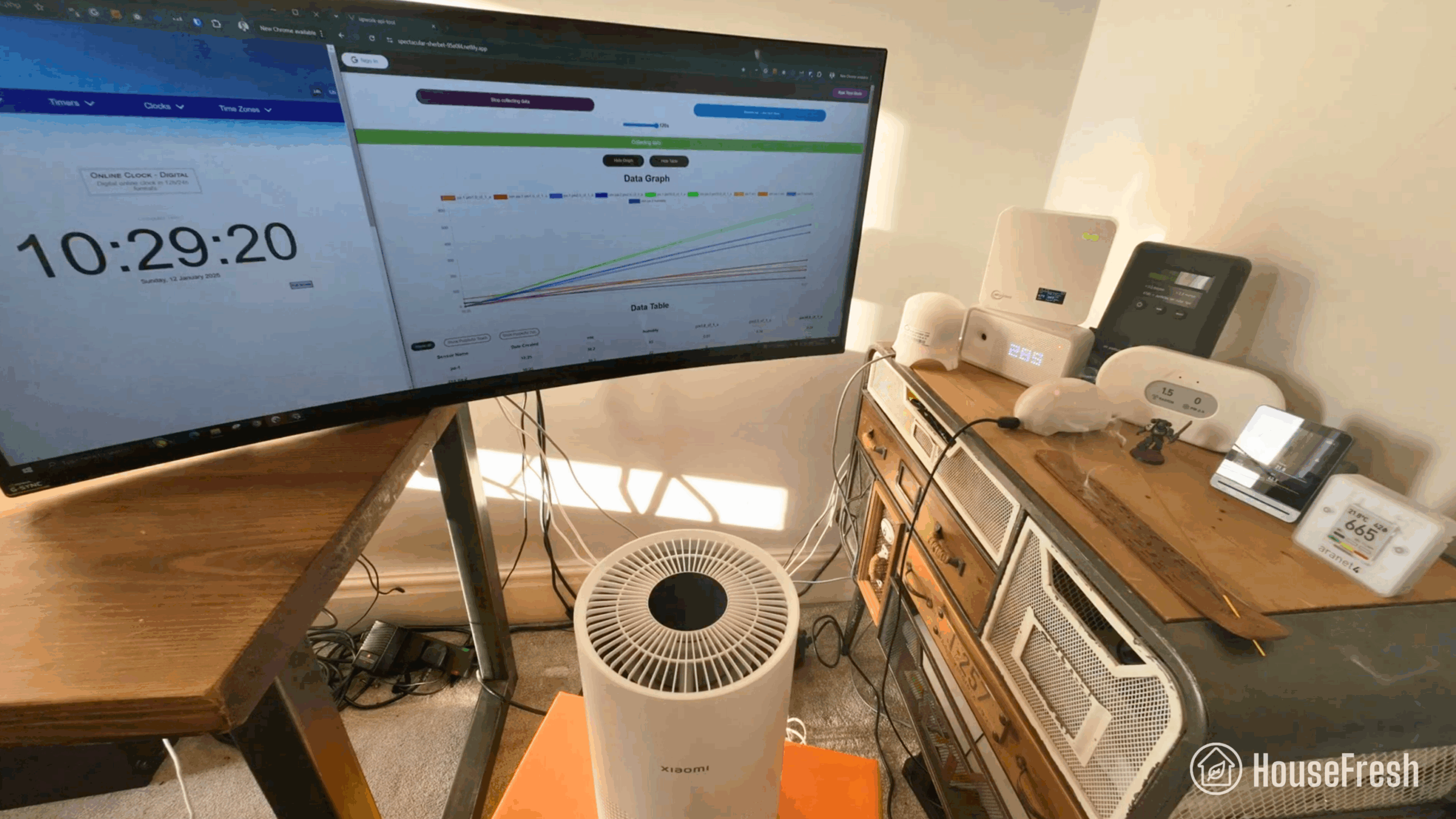
When running at top speed, our PurpleAir Zen sensor shows the 4 Compact needed 50 minutes to reach PM1 zero – and we estimate a PM1 CADR of 117 cfm which would be good enough to provide five air changes per hour in rooms no larger than 175 sq. ft.
When it comes to air cleaning performance at full power, the Compact 4 was outperformed by small models from Levoit, Coway and Winix.
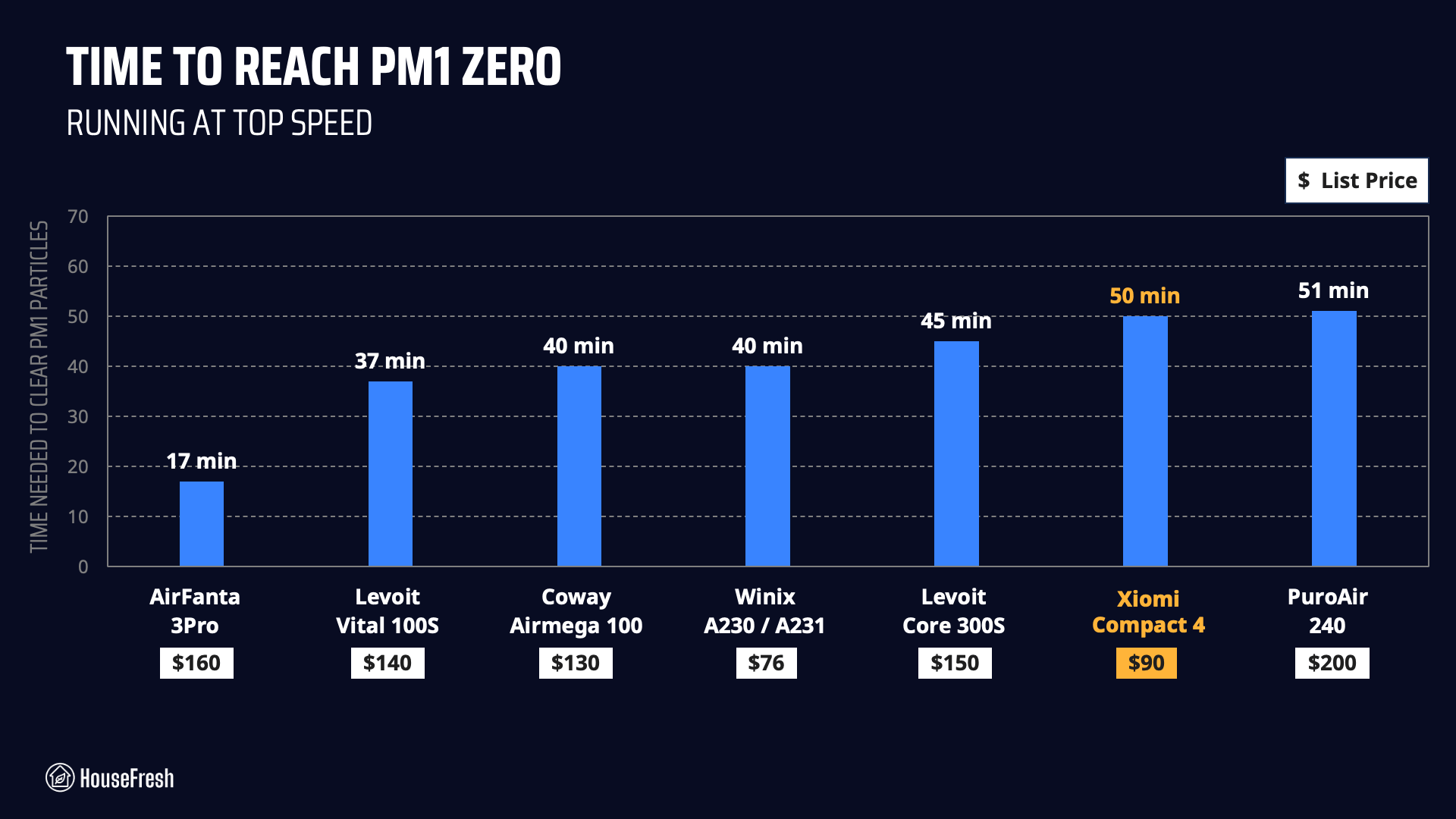
But it’s not just about raw particle removal performance when running at top speed…
Sound levels
The sound levels of the 4 Compact range from 35.3 dBA to 56.1 dBA — quieter than popular small units like the Winix A231 and the Coway Airmega 100.

The reality is that if your air purifier is too loud, you are likely to end up turning it off eventually.
That is why we use a sound meter to measure how much noise in decibels the 4 Compact generates at each fan speed from 3 ft. away:

Be aware that our background noise is 35 dBA, so the 4 Compact running on sleep mode and at speed 1 and 2 might be quieter if you could test sound levels in a silent room.
By the way, unlike standard air purifiers, there are no specific speed settings in the Compact 4. Instead, you get 14 options for room sizes inside the app that range from 2-4 cubic meters to 16–27 cubic meters. For this test, I selected six different rooms sizes.
Reaching 56.1 dBA at top speed, this Xiaomi device generates as much noise as you can expect from other small air purifiers we have tested, although it is on the higher side compared to the Levoit Vital 100S.
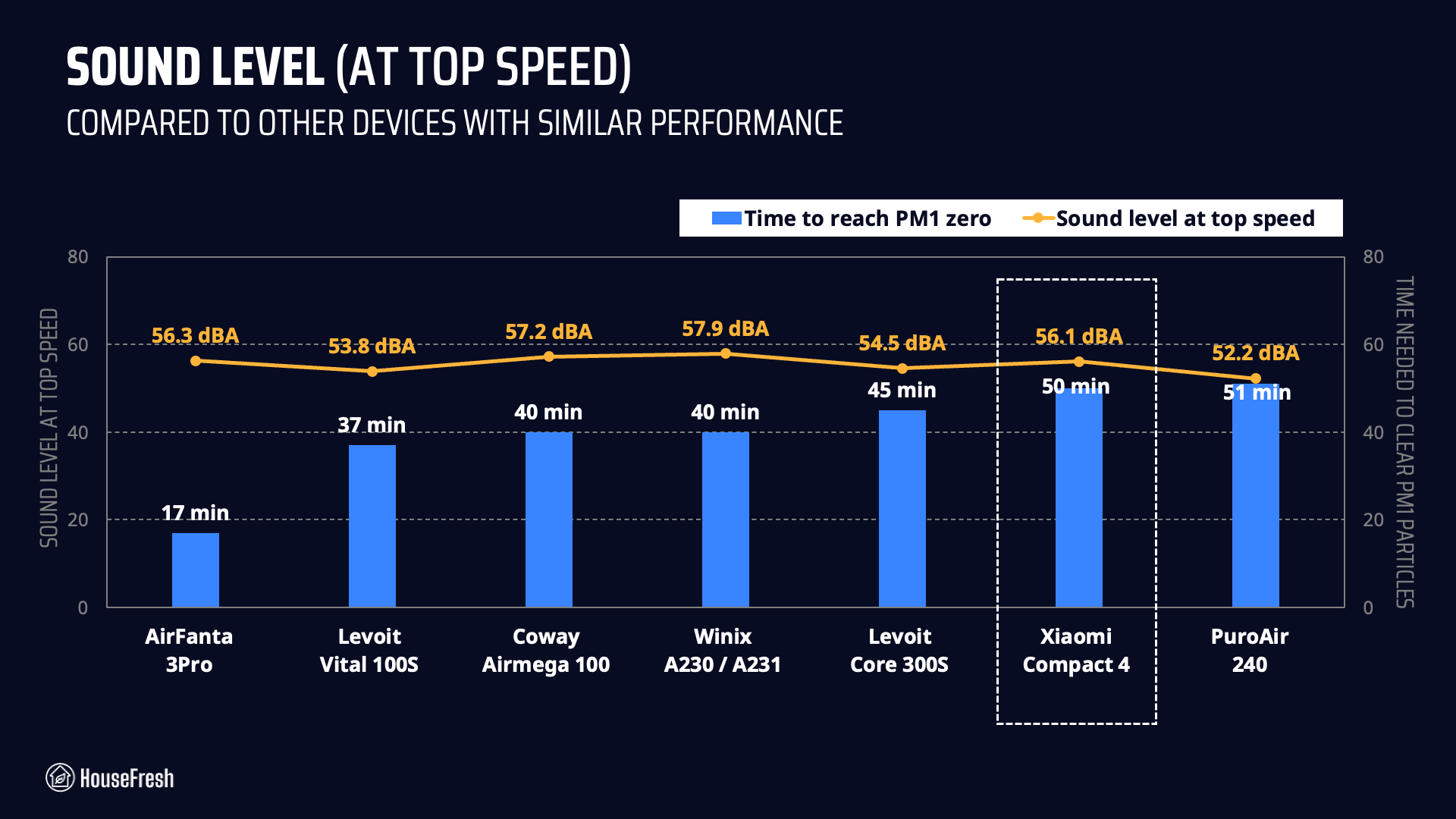
Now we have the sound levels at different fan speeds, we can find the speed that is below the 45 dBA limit we set for our quiet performance tests so we can re-test air cleaning performance.
Running at speed 4, the 4 Compact generates 44.5 dBA and was able to reach PM1 zero in 76 minutes, which we estimate to be a PM1 CADR of 77 cfm.
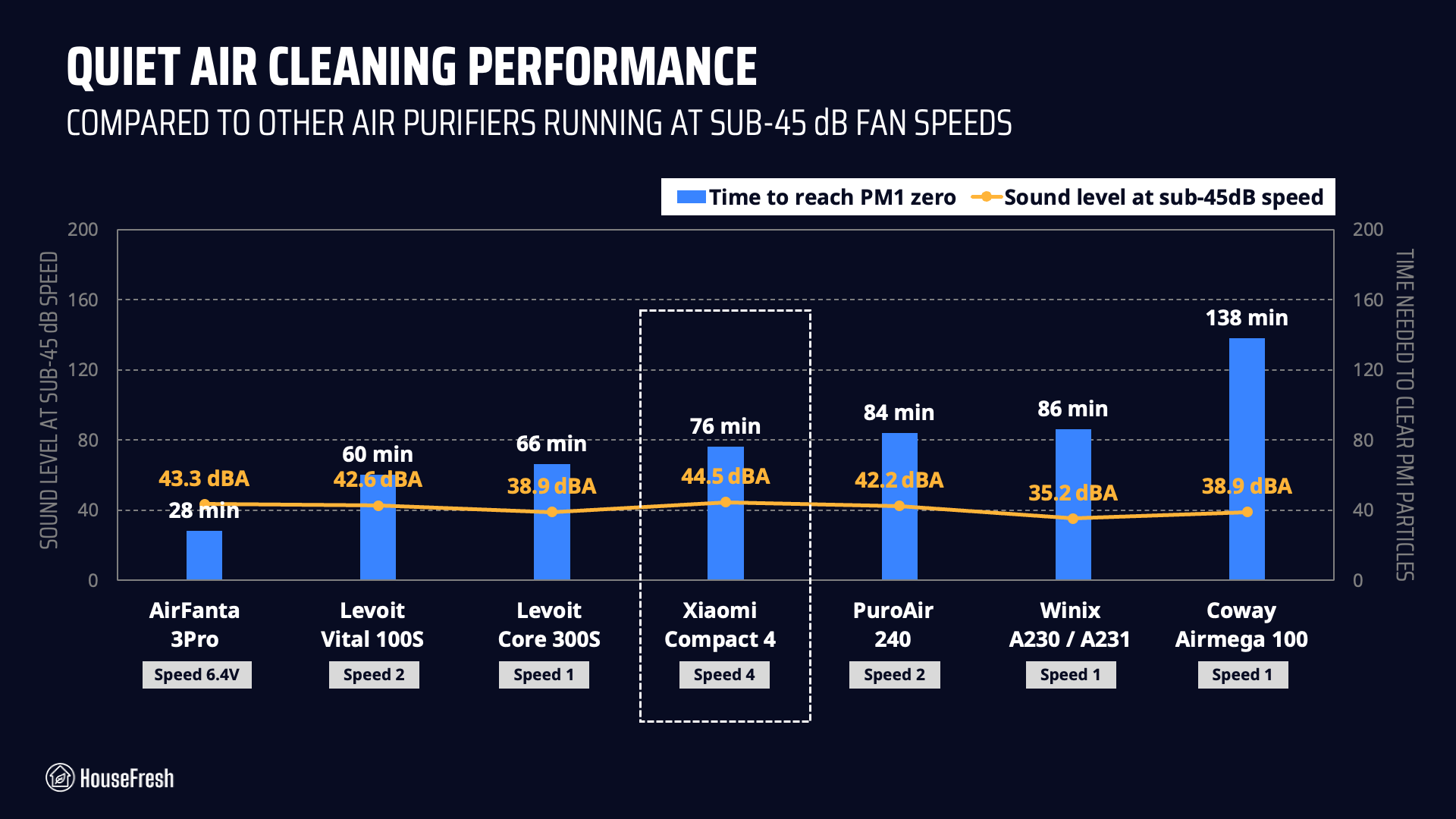
When accounting for sound, the Xiaomi 4 Compact ranks among the top three best performers on our table, right after the older Core 300S and the Vital 100S from Levoit.
However, part of this is down to the lack of fan speed options with the Winix and Coway models, so their sub-45 dBA fan speed is much quieter than what you get with the small Xiaomi.
But let’s start adding up long-term costs to see how much money you would need to spend each year to run an 4 Compact in your home.
Long-term running costs
Running an 4 Compact will cost you $93.52 per year, combining energy consumption costs and filter replacement prices.
We used our energy meter to record how much energy the 4 Compact uses when running at each fan speed and also while on standby.
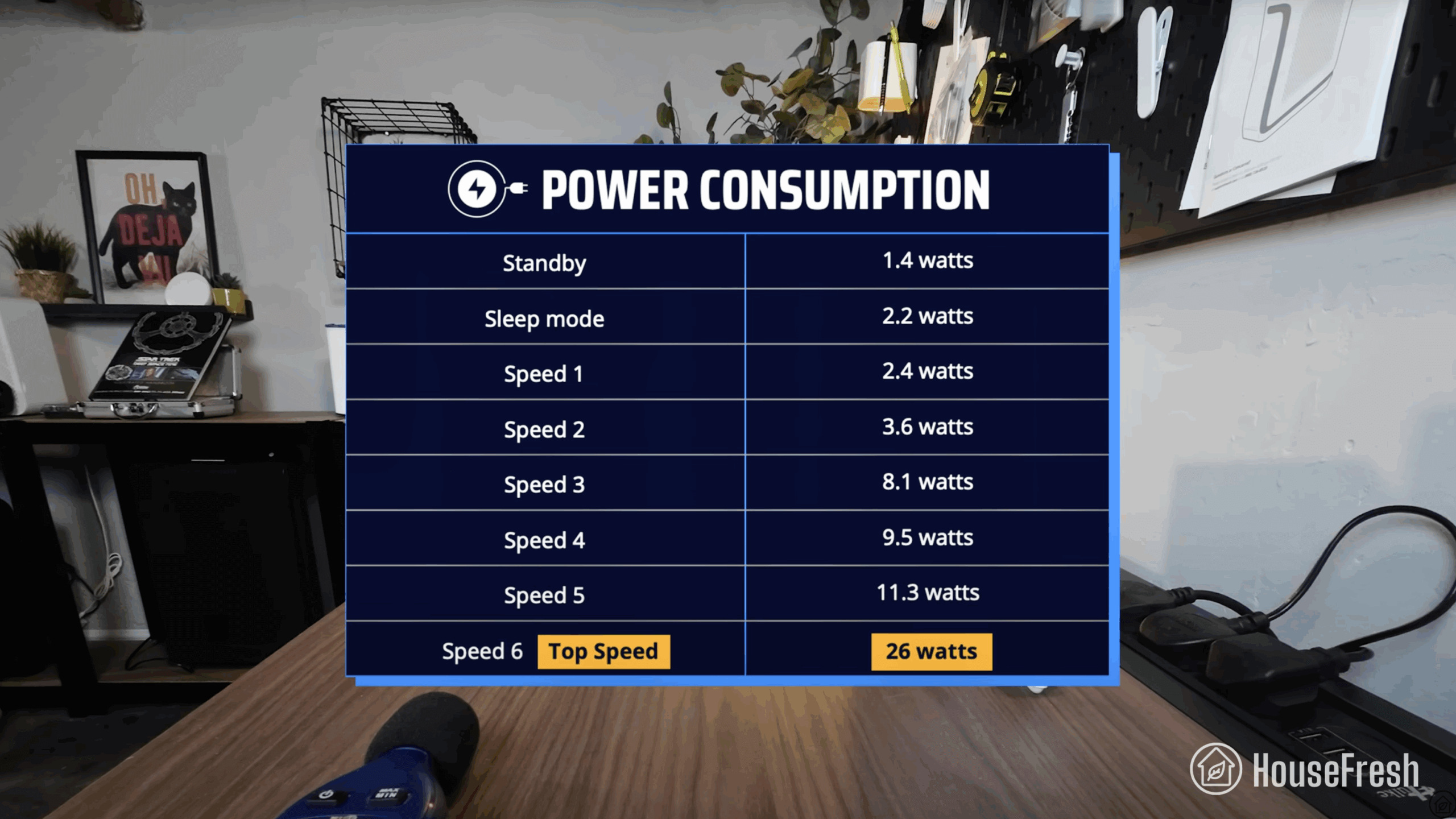
At top speed, the 4 Compact pulls just 26 watts. This means that if you were to leave it running at top speed 24/7 for one year, it would add $28.88 to your annual energy bill, assuming an average U.S. electricity prices.
However, it’s not just energy costs that add to the running cost of an air purifier, you will also need to replace the filters eventually.
The OEM filter for the 4 Compact costs £24.99 (or $32.43) and Xiaomi says you need to replace it every 6-12 months.
As always, we will take the lowest estimate of six months to calculate filter replacement costs in the worst case scenario. So, according to this estimate, you will need to buy two filters per year for your 4 Compact and this will cost you £49.98 (or $64.64).
When we combine this with the electricity cost, you can expect to spend $93.52 each year to run this device all day, every day at top speed.
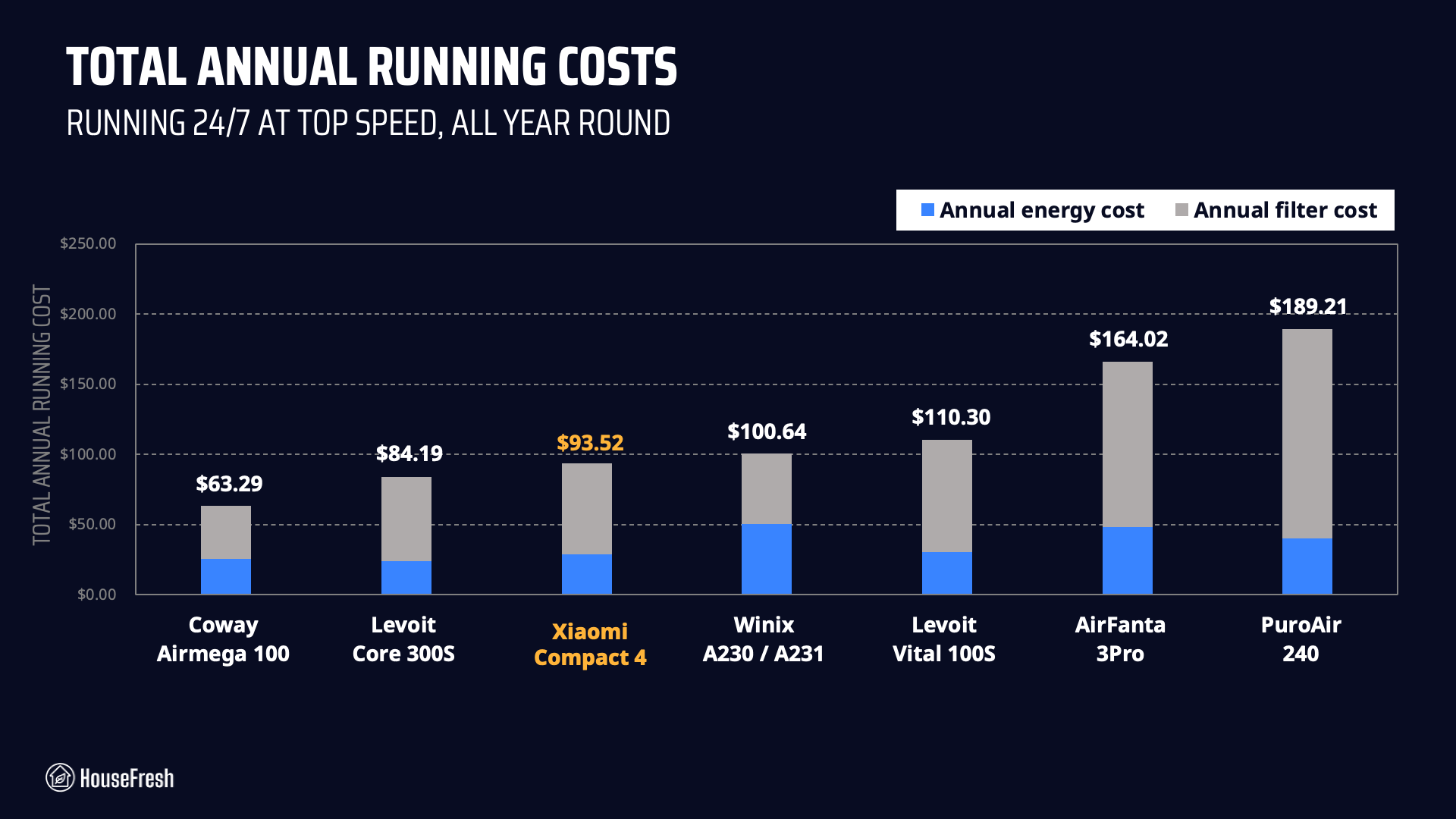
At $93.52 per year, the running costs for the Xiaomi 4 Compact are on the low side of the scale for the small air purifiers we have benchmarked against it.
Like we saw when testing the 4 Pro and the Elite, Xiaomi air purifiers generally have low running costs thanks to low-cost OEM filters and energy-efficient fan motors.
Bottom line: Should you get a Xiaomi 4 Compact?
If £70 (or $99) is the top of your budget, then I’d say yes.
At this price, the 4 Compact will give you okay performance at top speed but above average performance at sub-45 decibels, which I’d argue is more important in the day to day.
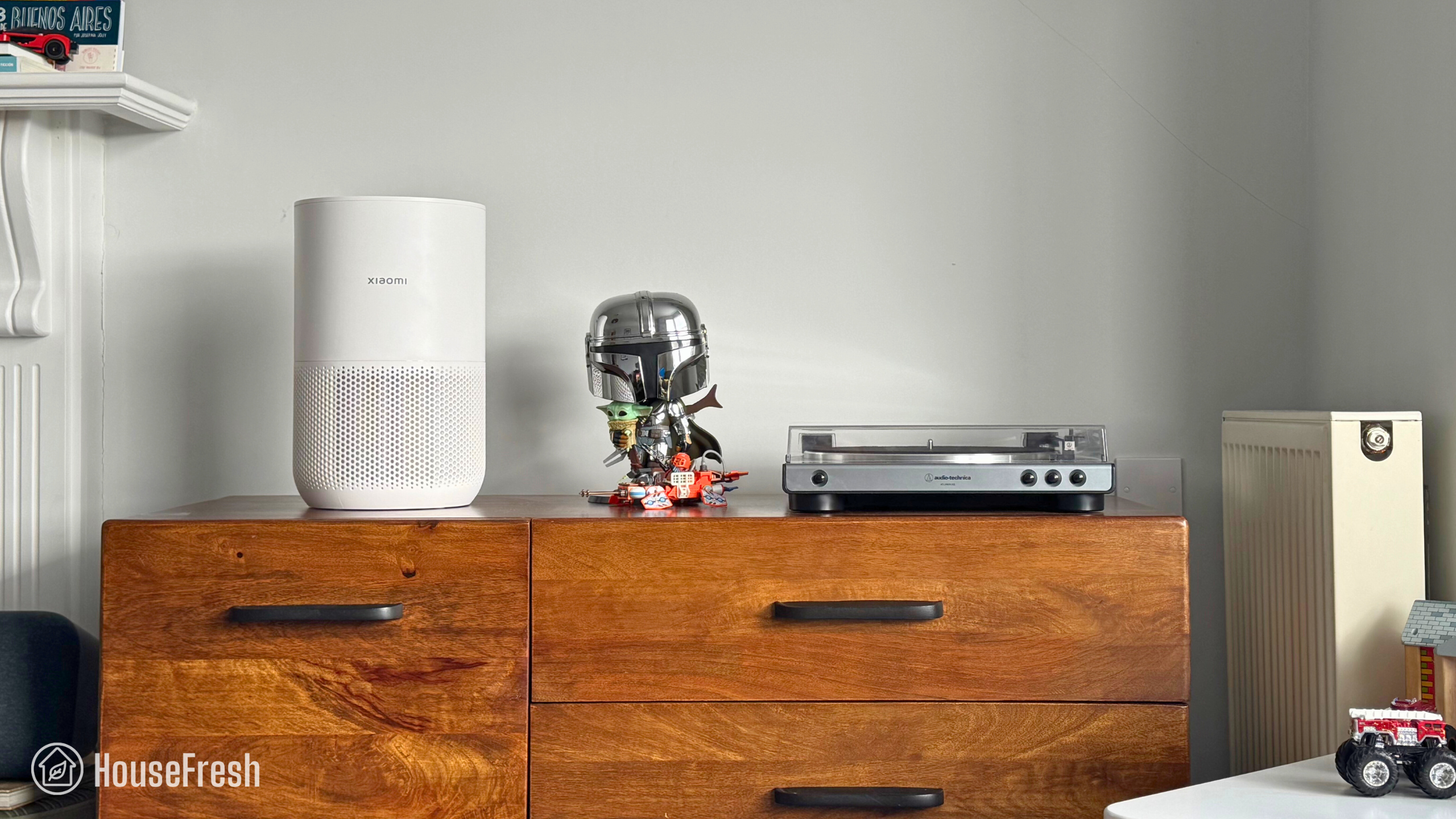
It also has some of the fairest annual running costs when compared to other popular small devices, so you won’t be spending an arm and a leg to use this air purifier each year.
So out of the many small air purifiers on the market, the Xiaomi 4 Compact stands out as being good value both at the point of purchase and in the long run.
And this is a key point when it comes to small and cheap units as the low upfront cost will trick you into buying them, but then you’re stuck with a device that will cost you twice as much to run as the months go by.
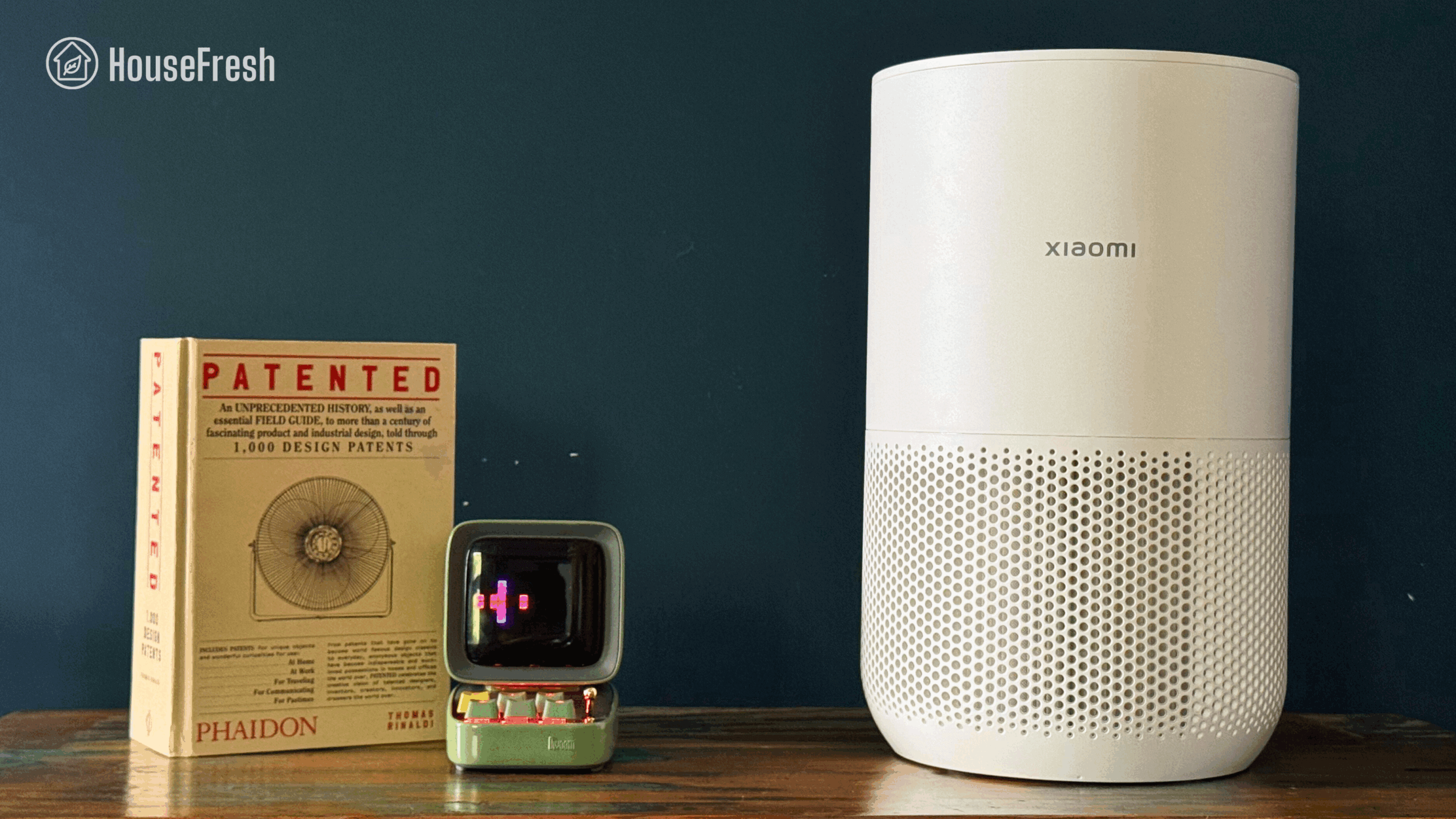
That being said, if you can, try to go bigger and choose a mid-size air purifier like the Winix T810, the Levoit Vital 200S or the AirFanta 3Pro that will give you more power and will make a more meaningful difference to your air much faster than the 4 Compact ever will.
But if you need a small air purifier that won’t cost you three times the price just to run it each year and you find that Xiaomi sells devices in your country, then the 4 Compact is a very good option.
By the way, if you decide to buy a 4 Compact, please use this link to support the work we do at HouseFresh, as we will get a small affiliate commission over the price of the sale at no extra cost to you.
Let me know if you have any questions in the comments below and I’ll get back to you as soon as I can.


